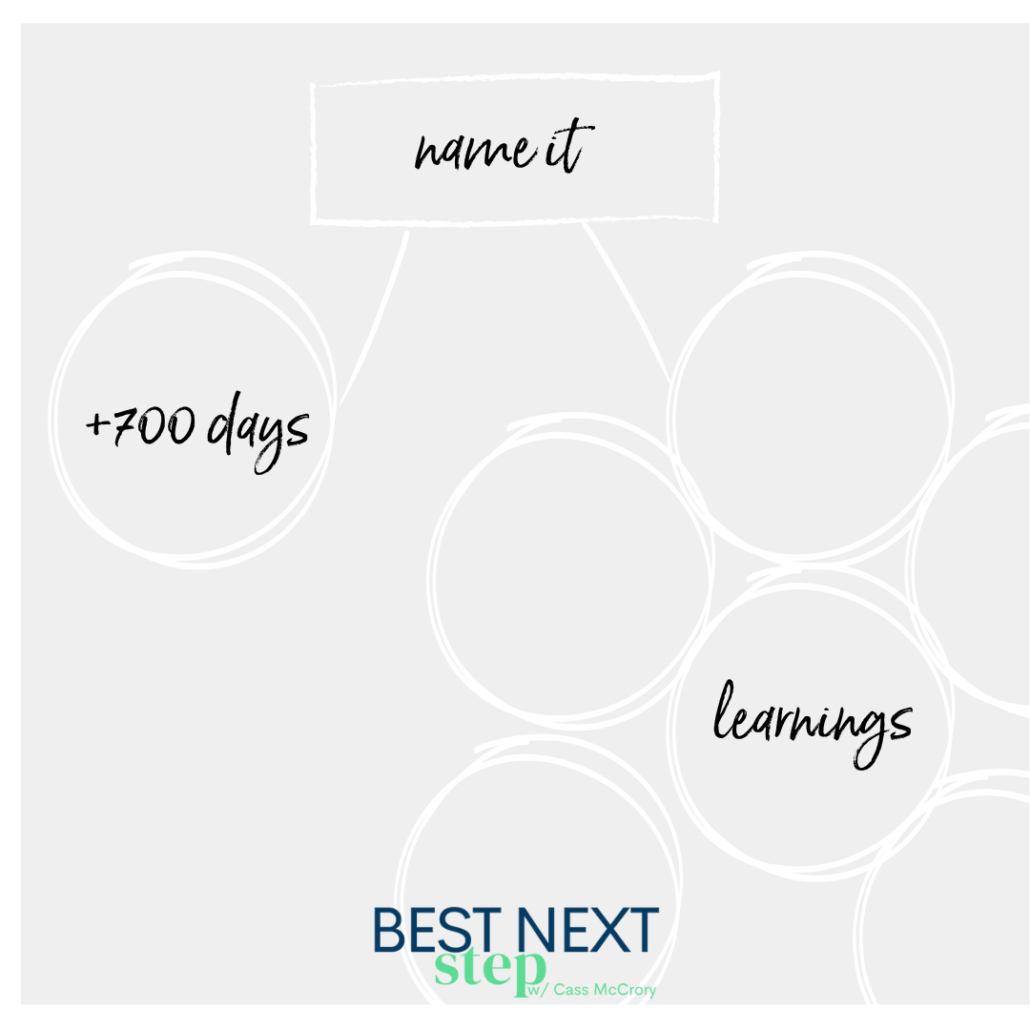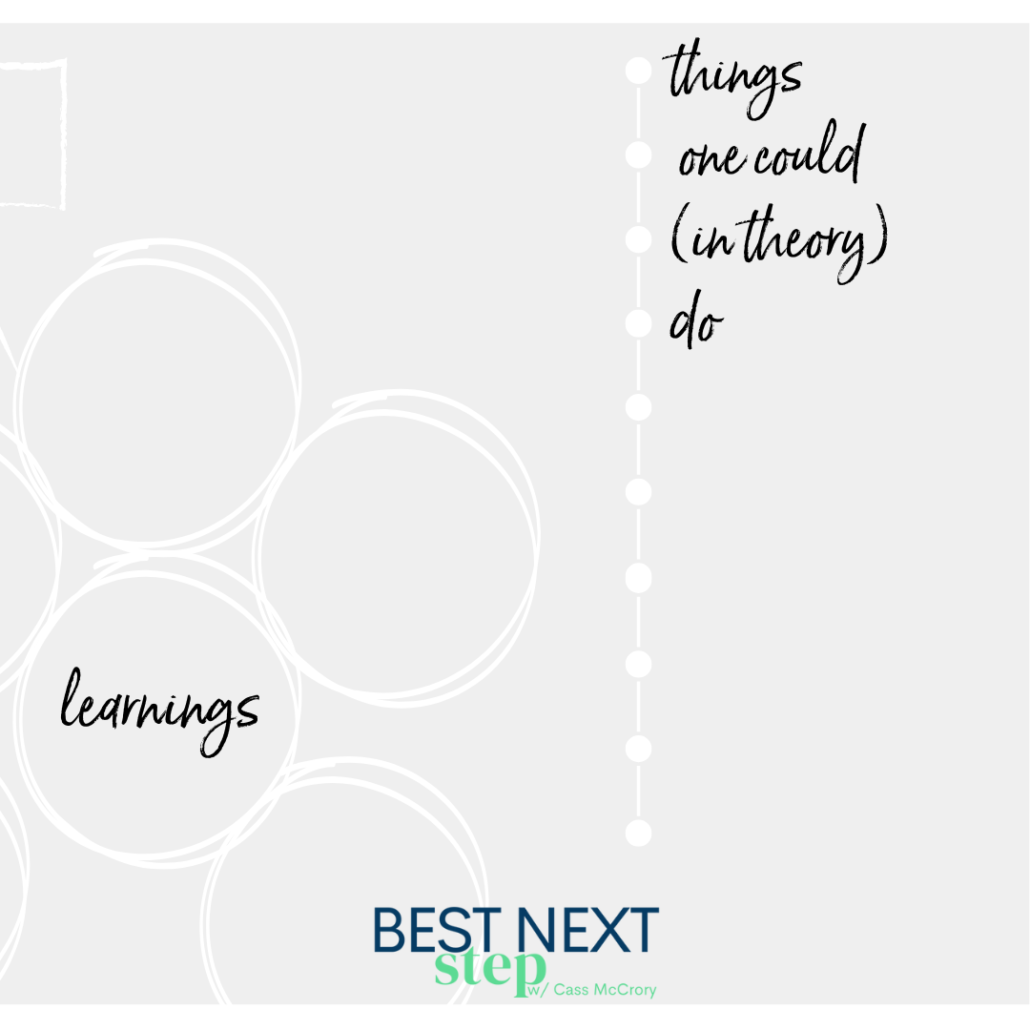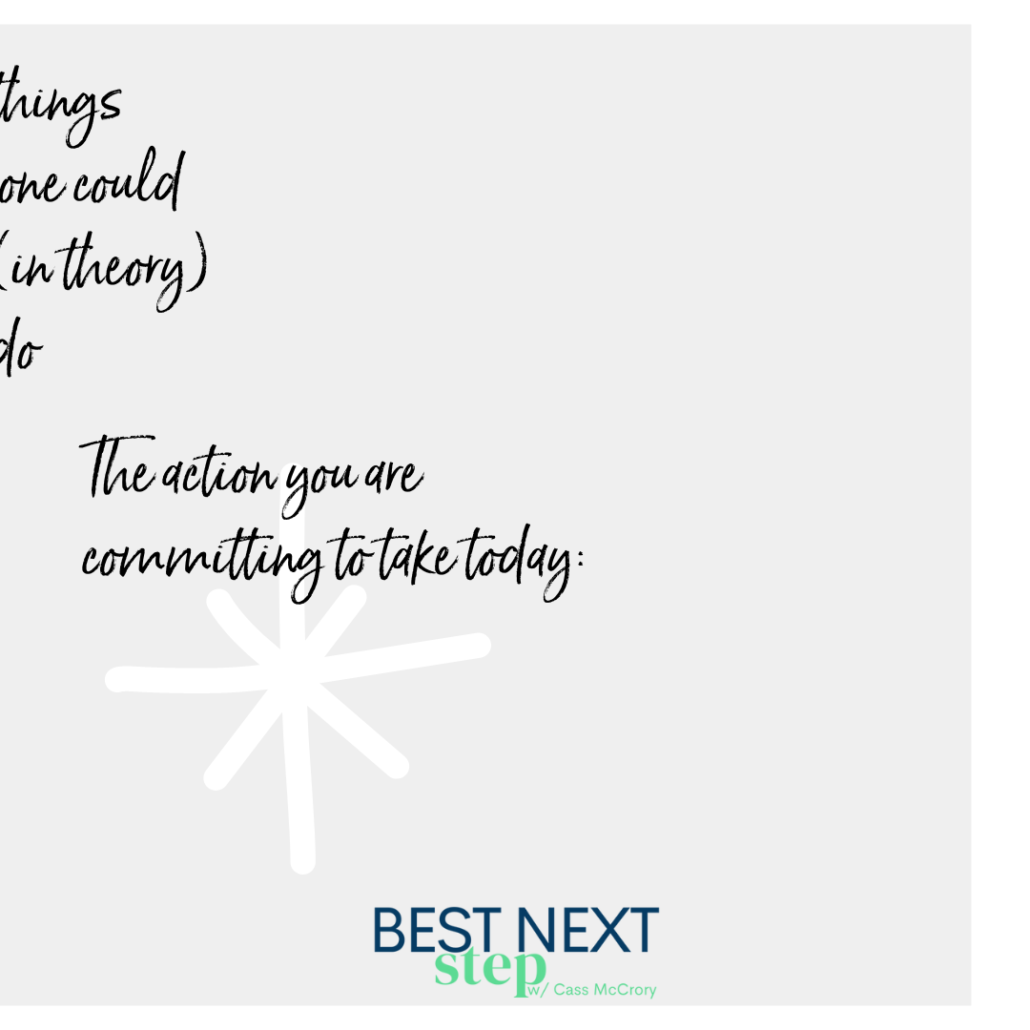How to Bounce Back (and Move Forward)
After disappointment, a rough start, a bad day, a few years of phoning it in.
In 4 sentences: You’ve had a setback you want to bounce back from. The details are incredibly important to you and not at all important to proceed. The work is to contain your experience so it’s a jumping off point for something better. You don’t want to just get back, you want to move forward.
What’s inside: An approach to have you taking Best Next Step action TODAY.
What could get in the way: The idea (which isn’t true) that you’re not ready just yet. You are and the fact that you’re here proves it.
You’re here because whatever happened before this moment, you had this small inkling of hope that what happens next could be different.
Maybe you’d be Unstuck. Free. Braver. Willing. Hopeful.
I see that in you, and I’m really glad you’re here.
Here’s what I am certain of:
There’s more opportunity in front of you than behind you.
And our work today is to build the bridge over the things that have so far tripped you up a bit.
And we do that in an exercise. This is much easier than walking lunges but it has one big caveat: you have to do it.
There’s a huge difference between THINKING about something and DOING something.
Step One. Draw a box on a piece of paper.
You’ll notice that I didn’t tell you the dimensions of the box. It’s because whatever size you drew is perfect.
Step Two. Inside that box, I want you to name the setback, the disappointment, or the rough start.
If you drew a big box, you could put in the details (your brain probably needed that safe place to drop it); if you drew a very tiny box, you may just write the date in the box or initials or you draw a bigger box around that box. Get it out on the page.
This is where I remind you the difference between THINKING about something and DOING something is truly huge. If our brains could think ourselves out of challenging things on the inside we’d never have those up in the middle of the night moments.
Why a box? Because we want to send a message to our brain that we literally contain the situation – we’ve got it handled. So your brain doesn’t need to remind you of how terrible everything is at 2:43 am….again.
Step Three. Draw two lines coming out of the box with a big circle at the end.
Step Four. In one circle, I invite you to answer this question: What happens if you were to stay stuck exactly where you are for 700 days? (Does having an actual date help you? Click here, and google will tell you 700 days from today.)
Step Five. In the other circle, I invite you to answer this question: What did we learn from this experience? Have lots of learnings go ahead and add Circles so it looks like a bunch of grapes at the end.
Step Six: Below your doodle image writing, answer this question: Knowing what I know now, what COULD I do? Make a list of at least 10 things one could do.
Please note: THIS IS NOT A TO-DO LIST. Putting that kind of pressure on your now hopeful brain would be cruel. This is just POTENTIAL, maybe one day, with the right support, IDEAS about what COULD be done.
Now some of them may be very reasonable (put the shovel down), and others might be incredibly difficult (forgive the person who hurt me).
Step Seven: Identify the easiest thing to do and put that single item on your to-do list for TODAY.
Why the easiest? Because being stuck is a hard place to be, and the thing you need most right now is a win, a moment of success, proof to your brain that you’ve got this. There’s a day to eat frogs…but it’s not today.
Step Eight: Really do the thing on your to-do list today. And if it is un-doable (some things are) identify something that IS and take action.
The thing about rough starts, disappointment, setbacks, and finding yourself someplace you don’t want to be is this: they last exactly as long as we let them.
Intentional Action with a Best Next Step takes us to a new place, one where we’re not stuck, we’re moving forward.
Want to learn what your values are?
They’re the key to fulfillment. And most people don’t have their own keys!





